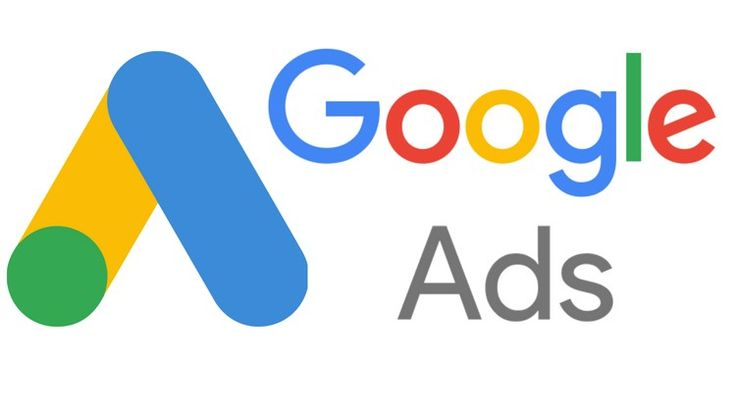Targeting the right audience is a critical component of any successful Google Ads campaign. However, many advertisers face the challenge of dealing with “personne hors cible” or out-of-target audiences. These are users who see or interact with your ads despite not being the intended recipients. Addressing this issue can improve ad performance, reduce wasted spend, and enhance ROI. This guide explores how to identify and manage personne hors cible Google Ads to optimize your campaigns effectively.
What Does “Personne Hors Cible” Mean in Google Ads?
In the context of Google Ads, “personne hors cible google ads” refers to individuals who:

- Do not match your target audience criteria.
- Are unlikely to convert based on their behavior, interests, or demographics.
- Engage with your ads in ways that result in irrelevant traffic or non-converting clicks.
Why Do Out-of-Target Audiences Appear?
Even with advanced targeting options, no system is foolproof. Out-of-target audiences may appear due to:
- Broad Match Keywords: These attract a wide range of users, some of whom may not fit your ideal audience.
- Improper Location Targeting: Ads may show outside intended regions if location settings are misconfigured.
- Incorrect Demographics: Settings like age, gender, or interests may be too broad, leading to irrelevant views or clicks.
- Misaligned Ad Copy: Generic or unclear ad copy can attract users outside your desired customer base.
The Impact of “Personne Hors Cible” on Campaigns
Increased Costs

When ads are served to irrelevant audiences, they generate clicks that don’t lead to conversions. This inflates your cost-per-click (CPC) and drains your budget without delivering results.
Lower Conversion Rates
A significant presence of out-of-target users reduces your conversion rate, impacting overall campaign effectiveness and potentially harming your Quality Score in Google Ads.
Poor Quality Score
Google evaluates ad relevance, expected CTR, and landing page experience to assign a Quality Score. Engaging with the wrong audience lowers ad relevance, decreasing your score and increasing costs.
Missed Opportunities
When budget is wasted on irrelevant traffic, there’s less to spend on reaching users who are more likely to convert, reducing the campaign’s effectiveness.
How to Identify “Personne Hors Cible”
Use Audience Insights

Google Ads provides audience insights that detail the demographics, interests, and behaviors of users interacting with your ads. Compare these with your intended audience profile to identify discrepancies.
Analyze Search Terms
Examine the search terms report for irrelevant queries triggering your ads. For example, if you’re selling premium fitness equipment but get clicks for “cheap gym gear,” you’re attracting out-of-target users.
Monitor Geographical Data
If your campaign is location-specific, review the geographic performance report to ensure ads are only being served in the intended regions.
Track Conversion Paths
Users outside your target audience rarely complete desired actions. By analyzing conversion paths in Google Analytics, you can identify and exclude sources of irrelevant traffic.
Strategies to Minimize Out-of-Target Audiences

Refine Your Targeting Options
One of the most effective ways to eliminate personne hors cible google ads is to optimize your audience targeting settings:
- Use Custom Audiences: Build custom audiences based on specific interests, search habits, or website visitors to ensure relevance.
- Leverage Lookalike Audiences: Use Google Ads’ similar audiences feature to target users who resemble your best customers.
Optimize Keywords
Broad match keywords often result in irrelevant traffic. To refine your keyword strategy:
- Switch to Phrase Match or Exact Match keywords to narrow your reach.
- Continuously add irrelevant queries to your Negative Keywords List to prevent ads from being triggered by them.
Adjust Demographic Settings
Ensure your campaign settings align with your target demographic:

- Use age, gender, household income, and parental status filters to focus on relevant users.
- Exclude demographics unlikely to convert, such as age groups that don’t align with your product offering.
Improve Ad Copy
Your ad copy should clearly reflect your offering and target audience. Include:
- Specific Call-to-Actions (CTAs) that appeal to your ideal audience.
- Keywords and messaging that set expectations about the product, price, or service, discouraging irrelevant clicks.
Geo-Targeting Adjustments
If location targeting is a priority:
- Use advanced location settings to focus on people in or regularly visiting your target area.
- Exclude locations that generate irrelevant traffic using the location exclusion feature.
Utilize Bid Adjustments
Set bid adjustments to allocate more budget to high-performing audience segments and reduce spend on lower-performing ones. This ensures your budget focuses on users more likely to convert.
Advanced Techniques to Tackle “Personne Hors Cible”
Combine Remarketing with Exclusions
Remarketing lists can help re-engage users who interacted with your site. However, you should also:
- Exclude audiences unlikely to convert, such as users who bounced immediately or abandoned their cart without intent to return.
Leverage Conversion Tracking
Ensure your conversion tracking is set up properly to attribute actions only to relevant audience members. Tools like Google Analytics and enhanced conversions can provide deeper insights into audience behavior.
Segment Campaigns by Audience
Instead of running broad campaigns, segment them based on different audience groups. This allows you to tailor messaging, budgets, and targeting for each segment, reducing the chance of attracting irrelevant users.
Monitor Performance Metrics Regularly
Set a schedule to review key metrics, such as CTR, CPC, and conversion rate. Anomalies in these metrics often signal the presence of out-of-target users. Adjust your settings as needed to correct course.
Measuring the Success of Your Efforts

After implementing these strategies, it’s important to measure their impact. Use the following metrics to assess improvement:
- CTR (Click-Through Rate): A higher CTR indicates that your ads are resonating with the right audience.
- Conversion Rate: An increase in conversions shows that your targeting is effectively reaching potential customers.
- Cost-Per-Acquisition (CPA): A decrease in CPA signifies better budget utilization by avoiding irrelevant clicks.
- Quality Score: A better Quality Score reflects higher ad relevance and improved user experience.
The Long-Term Benefits of Reducing “Personne Hors Cible”
Minimizing the impact of personne hors cible google ads not only improves the immediate performance of your Google Ads campaigns but also offers long-term advantages:
- Higher ROI: Every dollar spent targets users with a higher likelihood of conversion.
- Better Brand Reputation: Reaching the right audience fosters positive brand associations and trust.
- Efficient Budget Allocation: Reduced waste allows for strategic investment in high-performing campaigns.
- Sustainable Growth: Data-driven strategies lead to consistent and scalable success in your advertising efforts.
Final Thoughts
Dealing with personne hors cible Google Ads is a common challenge for advertisers, but it’s not insurmountable. By refining your targeting, optimizing ad copy, and analyzing audience insights, you can significantly reduce irrelevant traffic and focus on users who are most likely to convert.
Success in Google Ads is about continuous learning and adaptation. Use the strategies outlined in this guide to refine your campaigns, improve performance, and achieve your advertising goals effectively. Take control of your audience targeting today and watch your campaigns deliver better results tomorrow!

